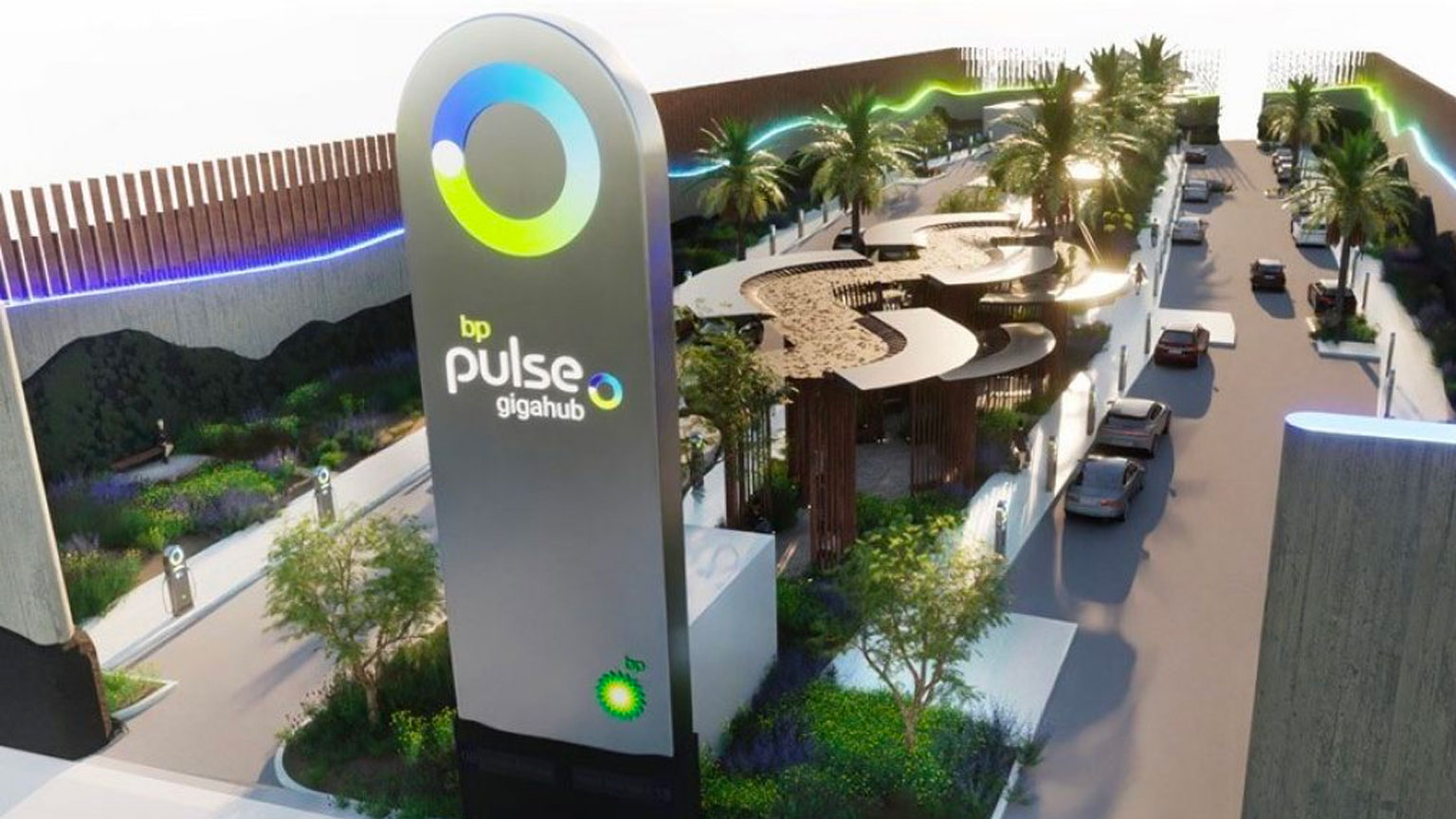gigahub™
Four ways Gigahub™ sites will transform on-the-go EV charging

EVs are increasingly hitting the road, but access to reliable charging remains a major barrier to adoption. This is particularly true for decentralized EV fleets that rely primarily on at-home charging or a limited network of public charging, such as ride-hail fleets. Ride-hail fleets–which include taxis, Uber, Lyft, and other Transportation Network Companies–have a mix of vehicle types, don’t follow fixed routes, and need to refuel on-the-go while working. These factors add complexity to ‘going electric’ that depot-based fleets don’t have to contend with.
Even with this complexity, ride-hail fleet operators and drivers are boldly moving towards EVs. This includes both Uber and Lyft, who have made zero-emission commitments in the next decade. Ride-hail fleets are a priority target for electrification, as these vehicles are driven three times the distance than the average, with many of those trips being in densely populated areas.
“Vehicles employed by California’s ride-hailing fleets make up 2.5 percent of the vehicle population, but consume 30 percent of all public fast charging. The California Energy Commission is proud to support projects like the Gigahub™ network by bp pulse, near LAX in partnership with Hertz, two transportation powerhouses who are working together to help electrify ride-hailing and rental fleets and cut pollution in communities.”
Patty Monahan, Lead California Energy Commissioner for Transportation
To make this transition a reality, EV ride-hail drivers need dependable and convenient access to charging. In the current market, charging stations are still spread thin geographically, and often unreliable. Refueling EVs is also a very different process from simply pulling into a gas station and filling up the tank.
There is an opportunity here to redefine what this fueling experience looks like–enter bp pulse’s recently announced Gigahub™ sites. Gigahub™ sites are large-scale EV fast-charging hubs, offering 50 or more chargers at convenient and accessible locations, with predictable energy costs, and amenities built for EV drivers. With this concept, we aim to solve four main concerns of on-the-go EV charging for ride-hail fleets: location, reliability, convenience, and cost.

It’s all about location
Currently, finding an EV charging station is not as easy as finding a gas station. This will change as the industry builds out networks of charging stations, but today’s reality is–finding EV charging on-the-go can be difficult.
This is a challenging situation for ride-hail drivers whose routes are determined by their passenger’s location, not by a fixed route that can be built around access to charging. However, while their routes are not planned, we do know that ride-hail drivers often frequent high-demand travel locations, such as airports. Currently, drivers picking up and dropping off passengers have to leave the airport in search of EV charging, adding unnecessary miles, time, and cost to the trip.
By building near airports, and other high-demand locations, our Gigahub™ sites make it easier for ride-hail drivers to recharge while en route. It’s our belief that having a convenient and accessible EV charging station will spur quicker adoption among ride-hail fleets.
Access to reliable charging
In addition to on-the-go charging being difficult to find, EV drivers also have to contend with chargers being non-operational once they do find one. A recent study in California published that only 73% of public charging ports were fully operational. With over a quarter of chargers being unavailable, drivers are faced with even more uncertainty on how to refuel their vehicles.
Underpinning the operations of our Gigahub™ sites is the use of bp pulse’s Omega charge management software. This industry-proven operating system actively monitors and manages the site’s chargers, power and demand, enabling bp pulse to respond to maintenance issues in real-time. With this 24/7 monitoring we can maximize charger uptime, assuring a great charging experience for the driver.
Built for convenience and comfort
Charging EVs does not look the same as stopping at a gas station. EVs on average take 15 to 20 minutes to recharge, meaning more time waiting at the station. Currently, charging stations are just rows of chargers without convenience features that we are accustomed to having at gas stations.
Beyond the traditional need for amenities like restrooms and snacks, ride-hail drivers are constantly on-the-go, so having convenience built for their needs makes the experience much more enjoyable. For this reason, Gigahubs™ sites will go beyond the usual convenience features, and will include relaxing waiting areas, car maintenance options, and priority charger reservation options.
By integrating Omega into driver apps we can allow drivers to plan ahead by reserving a charger stall. This integration makes it easy to pull in, plug in, charge, and pay all in a user-friendly platform. Drivers will also be able to see energy costs in real-time making it easier to predict the cost of refueling.
Driving predictable costs
Fleets need predictable and consistent fuel prices to maintain operations, the same can be said for on-the-go EV fleets. However, planning for electricity costs is less certain when charging is not centralized to a depot.
Relying on on-the-go charging means drivers are at the whim of electricity pricing at each charging location. While this is similar to public gas stations, the price of electricity is determined by more factors that are dependent on location, the utility provider, fluctuations in peak and off-peak pricing, and more.
The lessons we’ve learned from fleet deport charging can be applied to our large-scale EV charging hubs. Using Charging-as-a-Service to bundle capital, operating, and energy costs at a fixed rate can offer more predictable costs. As part of that service, the use of Omega to manage fluctuating energy costs means drivers charging at Gigahub™ sites should be able to refuel at the best price available.
The future of on-to-go EV charging
We created Gigahubs™ sites out of a need for reliable and convenient on-the-go charging for fleets, and this concept will change the way both fleets and consumers see the future of EV charging.
The first Gigahub™ site will be built near Los Angeles International Airport (LAX) in partnership with Hertz and the California Energy Commission. LAX is the busiest airport in the U.S. based on traffic volume, making it the perfect location for the inaugural Gigahub™ site.
In the future, Gigahub™ sites will provide reliable EV charging at airports, city centers, entertainment districts and beyond. All a part of bp pulse’s vision to build a nationwide Gigahub™ network that will transform the future of EV charging.
Go further

Find out how Gigahub™ EV fast-charging hubs are being launched across the U.S.
bp pulse announced plans to establish the bp pulse Gigahub™ network, a series of large, EV fast-charging hubs designed to serve ride-hail and taxi fleets near U.S. airports and high-demand locations across the nation.
Date
4 November 2022
author

Simon Lonsdale
Head of Sales & Strategy
bp pulse fleet
Topics


